Mardi Himal Trek: Your 11-Day Journey to Annapurna's Secret Sanctuary
Forget the crowded trails and well-trodden paths. Tucked away in the heart of Nepal, just a stone's throw from the popular Annapurna Circuit, lies a quieter, raw slice of Himalayan magic—the Mardi Himal Trek. This isn't just another hike; it's an 11-day adventure into the soul of the Annapurna region, a journey that trades bustling teahouses for serene rhododendron forests and rewards you with face-to-face encounters with the iconic Machapuchare, the majestic Fishtail mountain. If you’re yearning for a trek that feels genuinely discovered, where every step reveals a new, breathtaking panorama away from the crowds, then you’ve just found your perfect Himalayan match.
Imagine a trail that starts in warm, terraced farmland, where you wave to local farmers, and slowly pulls you upward into a silent, moss-covered forest straight out of a fairy tale. That's the magic of the Mardi Himal Trek. This isn't a brutal climb; it's a gradual, soul-stirring immersion into the heart of the Annapurna Sanctuary. You'll spend days weaving through ancient rhododendron groves (which are exploding with color if you come in spring), with the snowy peaks playing peek-a-boo through the canopy.
Then, you break the treeline. And wow. The world opens up to reveal a breathtaking, high-altitude meadowland, with the entire Annapurna range—Machapuchare, Annapurna South, Hiunchuli—right there in front of you. You’ll be sipping tea at a teahouse around 3,600 meters, feeling the thin, crisp air, and pinching yourself that this is real. The final push to Mardi Himal Base Camp (around 4,500 meters) is a challenging but short climb that rewards you with a 360-degree panoramic view that is nothing short of spiritual. You’ve earned a front-row seat to one of the greatest mountain spectacles on Earth, and the best part? You'll probably have that view all to yourself. It’s the perfect blend of cultural warmth, natural beauty, and that pure, unfiltered awe that only the Himalayas can deliver.
A Walk Through Living Nature: The Flora & Fauna of the Mardi Himal Trek
People rave about the mountain views on the Mardi Himal Trek (and yeah, they’re jaw-dropping), but honestly, one of the coolest parts? Watching the world around you literally morph as you drag yourself up the trail. Forget any idea of a dead, rocky wasteland—this place is alive. It’s like someone cranked the dial from “farm country” to “enchanted forest” to “Is that a yak?” in the span of a single day.
You start off down in the villages where the air is heavy, almost sticky with that earthy, green smell. The kind where you can tell things have been growing here for centuries. Potatoes, barley, you name it—patchwork terraces everywhere. Every so often, you’ll spot a dzopkyo (yeah, that’s like a yak-cow mashup) giving you the stink-eye from behind a fence. They’re the unofficial bouncers of the Himalayas, I swear.
Pretty soon, the farms fade and bam—you’re swallowed by forest. If you hit it in spring (March, April if you’re lucky), get ready for an all-out rhododendron explosion. Pink, red, white… it’s so intense you’ll start to wonder if someone snuck into your dreams and dialed up the saturation. The ground’s cushy with needles, and the birds—man, they’re in a full-on gossip session above your head. Keep your eyes peeled for monkeys (rhesus macaques and those loopy langurs, mainly) doing their acrobat thing. And if the universe really likes you, maybe you’ll hear a musk deer barking somewhere off in the green.
Climb a bit higher and the jungle vibe chills out—trees start looking all gnarly and ancient, like they’ve seen some things. Underfoot, it’s all juniper and scraggly grasses. The air gets snappy. This is where you might catch a flash of Danphe feathers (that’s Nepal’s national bird, kind of a psychedelic pheasant) or spot a massive griffon vulture riding the wind, just flexing on everyone with those wings.
Push on and you’ll hit the alpine zone. Here, plants cling to the dirt like they’re holding on for dear life. Not much to shade you, just endless sky and rock and, wow, those Annapurna views. Silence up here feels huge—except for the occasional yak bell. Those beasts just chill, munching on whatever grass dares to grow, completely unfazed by the weather or the scenery.
What’s wild is how the whole trek is basically a nature documentary in fast-forward. Tropical forest one minute, windswept tundra the next. Every few steps, something new. It’s all protected land, too, so you’re getting the VIP, untamed version. Best you can do is walk softly, take it all in, and maybe say thanks for letting you pass through.
Mardi Himal Trek Full Route Breakdown:
Alright, picture this—Mardi Himal isn’t just some endpoint you check off a list. Nah, the real magic is in the miles you rack up getting there. This trek? It’s not a straight grind up a hill. It’s more like a slow-motion rollercoaster through every flavor of the Himalayas you can imagine. One minute you’re wandering through green farms that feel like a travel ad, and the next you're up in the clouds, where the only thing tougher than the view is the altitude.
Things kick off with the classic Kathmandu-to-Pokhara drive—long enough to make you wonder why you didn’t just teleport, but worth it for that first chill vibe by the lake. Seriously, Pokhara's got this whole laid-back thing dialed in. Then it’s off to Phedi, where the cars get ditched and your shoes (and, let’s be honest, your calves) take over.
First stop? Pothana. This place is pure mountain village energy, perched up with a view that'll slap you awake no matter how jet-lagged you are. Annapurna and Machapuchare pop out from the clouds and basically laugh in your face. “Thought you’d seen mountains before? Cute.”
After that, the trail gets wilder—like, literally, you’re in thick rhododendron forests that look straight out of a fantasy novel. Forest Camp is tucked away like it’s hiding from the world, and honestly, you might want to join it. Then you climb to Low Camp—trees thin out, and suddenly it’s all sky and snow and “oh wow, I’m really doing this.” High Camp is where things get serious. Air’s thinner, views are sharper, and you start to realize you’re not in Kansas anymore.
Summit day? Forget Instagram, you’ll want to tattoo that memory on your brain. You haul yourself up to Mardi Himal Viewpoint (4,200m), and boom—Machapuchare’s right there, all dramatic and pointy, while Annapurna sprawls out like it owns the joint. If you’re feeling extra bold, the last push to Base Camp (4,500m) is just pure bragging rights.
Coming down, you don’t just retrace your steps. Nope, you loop through Siding, a village where life hasn’t been Instagram-filtered to death—real people, real smiles, real good dal bhat. Then it’s back to Pokhara, where showers and cold drinks exist (thank God). Last bit? A quick little hop on a plane back to Kathmandu. If you’re lucky, you’ll snag a window seat and get one last look at those peaks you just conquered—tiny from up there, but trust me, they’ll loom large in your head for ages.
Choosing Your Season: When to Trek Mardi Himal for the Perfect Experience
Picking your season for the Mardi Himal Trek isn't just about checking a weather forecast; it's about choosing the backdrop for your adventure. Each season in the Himalayas has its own personality, its own light, and its own unique gift for travelers. Whether you dream of walking through blooming forests or under crystal-clear skies, there's a perfect time for you. Here’s the real scoop on what each season offers, so you can find your ideal window.
Spring (March to May): The Vibrant Bloom
If you're a photographer or a nature lover, this might be your heaven. After the winter chill, the weather warms up into perfect, comfortable hiking temperatures. But the real showstopper is the rhododendron forest—it absolutely erupts. Imagine entire hillsides painted in shocking reds, pinks, and whites. The skies are generally clear, offering brilliant views of the Annapurna range, and the trails are dry and stable. It's a season of energy, color, and life.
Summer/Monsoon (June to August): The Lush & Quiet Gamble
This is for the adventurous soul who doesn't mind a little liquid sunshine. Yes, you'll encounter rain, usually in the afternoon showers that roll in. Mornings, however, are often clear and stunning. The payoff? The landscape is an unbelievable, emerald green, the trails are incredibly quiet, and you'll have those mountain views all to yourself when the clouds part. It’s a more raw and dramatic experience. The challenge is dealing with potential rain, leeches on the lower trails, and the possibility of flight delays to Pokhara.
Autumn (September to November): The Classic Perfection
Ask any seasoned trekker and they'll tell you: autumn is the golden season for trekking in Nepal. The monsoon has washed the sky clean, leaving behind air so clear the mountains feel like you can reach out and touch them. The weather is stable, sunny, and perfect for walking, with cool mornings and warm days. This is the season for guaranteed, jaw-dropping panoramic mountain views and busy, social trails. It’s the most popular time for a reason—the conditions are simply unbeatable.
Winter (December to February): The Serene Wonderland
For those who cherish silence and stark beauty, winter is a hidden gem. The days are often sunny and spectacularly clear, but make no mistake—the nights are cold. The higher you go, the more you'll crunch through frosty trails and see the landscape transformed into a quiet, snow-dusted paradise. The trade-off for the chilly temperatures is immense solitude and incredibly sharp, crisp views. This season requires serious cold-weather gear but rewards you with a profoundly peaceful experience.
Why This Trek Stays With You: Unforgettable Mardi Himal Highlights
Let's be honest, you're looking at a dozen different treks. So what makes this one special? It’s the collection of moments—both huge and quiet—that stick in your memory long after your boots are put away. This isn't just a checklist; it's the feeling of genuine discovery. Here are the moments that define the Mardi Himal adventure.
- Witness Sunrise from 4,200 Meters. Make the final pre-dawn push to the Mardi Himal Viewpoint and watch the first light ignite the fishtail summit of Machapuchare in a blaze of golden-pink alpenglow. It’s a spiritual experience.
- Walk Through a Living Rhododendron Cathedral. In spring, the entire forest between Pothana and Forest Camp erupts into a breathtaking tunnel of red and pink blooms. It feels like walking through a natural masterpiece.
- Earn Your Front-Row Seat to the Annapurna Range. The reward for your effort is an unobstructed, 360-degree panoramic view of some of the world’s most famous peaks: Annapurna I, Annapurna South, Hiunchuli, and the iconic Machapuchare.
- Experience the Thrill of a High-Altitude Ascent. The climb from High Camp to the viewpoint is a proper mountain adventure. You’ll feel the thin air at over 4,000 meters and the sheer exhilaration of standing on a true Himalayan ridge.
- Find Solitude on the Trail. Unlike its crowded neighbors, the Mardi Himal route offers a sense of peaceful isolation. You’ll often have the breathtaking Himalayan landscape all to yourself, a rare privilege in Nepal.
- Descend Through Traditional Villages like Siding. The loop back isn't just a return trip. It’s a chance to experience authentic Gurung culture and hospitality in a traditional Nepalese village far from the main tourist circuit.
- Enjoy the Perfect Blend of Challenge & Comfort. This trek is achievable for anyone with a good fitness level, and nights are spent in cozy teahouses with warm meals, making it an accessible yet authentic adventure.
- Spot Himalayan Wildlife in its Natural Habitat. Keep your eyes peeled for troops of playful langur monkeys in the forests, the majestic Danphe pheasant (Nepal's national bird), and soaring griffon vultures.
- The Breathtaking Pokhara to Kathmandu Flight. Cap your adventure with a spectacular 25-minute scenic flight that gives you a stunning bird's-eye view of the hills and valleys you just spent days traversing.
- The Unbeatable Sense of Accomplishment. Standing at Mardi Himal Base Camp (4,500m), looking back at how far you’ve come, delivers a profound feeling of personal achievement that’s hard to find anywhere else.
Beyond the Basic Teahouse: A Luxury Trekking Experience on Mardi Himal
Let's reshape what you think trekking in Nepal means. This isn't about roughing it. The Luxury Mardi Himal Trek redefines adventure by seamlessly blending the raw, untouched beauty of the Himalayas with impeccable comfort and service. Imagine returning from a day of breathtaking vistas to a hot shower, a gourmet meal, and a warm, comfortable bed—every single day. That’s the promise of this journey.
Your Sanctuary in the Sky: Luxury Lodging
Forget the standard, sparse teahouses. Your accommodation on this trek is carefully curated to provide an oasis of comfort at every stop. We partner with the premier lodges along the route, which are more akin to boutique mountain hotels.
Premium Rooms: You'll enjoy private, well-insulated rooms designed for comfort after a day on the trail. Expect comfortable single or double beds with high-quality sleeping bags or thick, clean duvets provided. Many feature private attached bathrooms with modern, western-style toilets and—the ultimate luxury—continuous hot water showers powered by solar or hydro systems.
Stunning Settings: These lodges are strategically located to offer the most spectacular panoramic views of the Annapurna and Machapuchare ranges. Your evening tea or morning coffee comes with a side of unforgettable Himalayan sunrises and sunsets, right from the lodge's balcony.
Communal Luxury: Common areas are warm and inviting, often featuring cozy dining rooms with heating stoves, comfortable lounging areas with books and games, and spacious decks perfect for stargazing in the incredibly clear night sky.
A Culinary Journey: Gourmet Dining on the Trail
The food on this trek is a far cry from simple dal bhat repetition (though we serve a fantastic version of that too!). Our expert kitchen teams prepare a diverse menu that caters to the international palate while emphasizing fresh, energizing ingredients.
Hybrid Menus: Enjoy a wide variety of expertly prepared dishes, from authentic, flavorful traditional Nepalese cuisine to familiar and well-executed Western classics. Think homemade pizzas from a wood-fired oven, fresh pastas, hearty soups, and seasonal salads. Breakfast includes fresh bread, pancakes, eggs cooked to order, and locally sourced honey.
- Health & Hygiene: Our commitment to your well-being is paramount. We operate to the highest hygiene standards in teahouse trekking. All water is purified, vegetables are thoroughly washed in treated water, and kitchens are maintained with meticulous care. You can dine with complete confidence.
- Altitude Nutrition: Our menus are designed to support acclimatization and energy levels. Meals are nutritious, balanced, and plentiful. You’ll be served hot drinks like ginger lemon honey tea and garlic soup—known aids for altitude adjustment—as a complimentary part of your experience.
- Unexpected Delights: As part of your luxury package, anticipate special touches. This could be a surprise celebration cake baked at high camp for a birthday, a packed gourmet lunch with a view, or a complimentary hot towel and welcome drink upon arrival at your lodge each afternoon.
The Luxury of Seamless Service
True luxury is the absence of worry. That’s the real luxury we provide.
- Dedicated Support: Your journey is supported by a large team, including your guide, assistant guide, and porters, ensuring personalized attention and a light daypack for you.
- Hot Water Bottles: It’s a small touch that makes a huge difference. You’ll often find a hot water bottle tucked into your sleeping bag at night to ensure a warm and restful sleep.
- Connectivity: While we encourage disconnecting, select lodges offer paid Wi-Fi services, allowing you to share a few highlights from the mountains if you wish.
- This is more than a trek; it's a five-star experience, carefully delivered in the most remote and beautiful corners of the Himalayas.
Trekking Permits & Regulations Guide for Mardi Himal Trek
Alright, let’s cut through the bureaucracy jungle and talk real about permits for the Mardi Himal Trek. Yeah, paperwork isn’t exactly the most riveting part of your adventure, but unless you’ve got a secret tunnel into the Annapurna region (and if you do, tell me your ways), you’re gonna need a couple of official passes. Here’s the lowdown, minus the sugarcoating.
First up: ACAP. That’s the Annapurna Conservation Area Permit. The whole trek is inside this protected zone—think “don’t mess with our mountains and forests” level of protected. You can grab this permit in Kathmandu, over at the Tourism Board office in Bhrikutimandap, or in Pokhara at the ACAP entry counter. Price? For most foreigners, it’s 3,000 Nepali Rupees (around $25 if you don’t want to do the math). SAARC folks get it cheaper, and Nepalis pay basically pocket change. That money, by the way, doesn’t just disappear—supposedly it helps keep the trails in shape and throws a bone to the local communities.
Next on the list: the TIMS card. That’s the Trekkers’ Information Management System—yeah, they love their acronyms here. It’s basically Big Brother making sure you don’t vanish into thin air. You’ll need your passport and a couple of photos, so don’t show up empty-handed. Cost? 2,000 rupees for solo wanderers, half that if you’re rolling with an agency, and even less for SAARC nationals. Snag one in Kathmandu at the Nepal Tourism Board, or head to Pokhara’s TAAN or Tourism Board offices. Honestly, if you’re using an agency, let them do the paperwork while you sip a masala tea.
Both these magic passes—ACAP and TIMS—you can pick up at the usual tourism offices in Kathmandu and Pokhara. Most trekking companies will sort it all out for you (thank god for small mercies).
A couple of things you don’t want to mess up: keep those permits on you at all times. Seriously, there are checkpoints, and those guys love stamping things and writing down your details. Lose your permits, and you’re in for a world of hassle. Good news? Unlike some of Nepal’s more “exclusive” trails, you can trek Mardi Himal solo if you like. No need to sell your soul for a guide, though honestly, a local pro can save you from getting lost or eaten by, I dunno, wild goats.
A hot tip: if you’re thinking of hitting up other Annapurna classics like the Base Camp or Ghorepani Poon Hill, the same ACAP and TIMS will work. No need to double-pay. Oh, and bring a bunch of photocopies. When you’re at checkpoint number seven and the officer asks for your permit again, you’ll thank me.
So yeah, do the boring bits, get your permits, and then you can get on with the actual fun: trekking that mind-blowing Mardi Himal trail.
Fitness Level & Trekking Difficulty Guide for Mardi Himal Trek
The Mardi Himal Trek – Annapurna’s Hidden Gem Adventure is considered a moderate-level trek in Nepal. It does not demand advanced mountaineering skills, but a good level of physical fitness is necessary to enjoy the journey comfortably. The route combines well-maintained trails with some steep ascents and descents, making it suitable for beginners with preparation and experienced trekkers alike.
Daily Walking Distances:
- Trekkers usually walk 5 to 6 hours per day, covering an average of 8–12 kilometers depending on the stage of the trek.
- Some sections involve continuous uphill climbs through forests and ridges, requiring stamina and steady pacing.
Altitude Challenges:
- The highest point of the trek is Mardi Himal Base Camp at around 4,500 meters (14,764 ft).
- While this altitude is not as extreme as Everest Base Camp or Kanchenjunga, some trekkers may still feel mild symptoms of altitude sickness.
- A gradual ascent with one or two acclimatization days in the itinerary helps reduce risks.
Terrain Difficulty:
- The trail starts with gentle paths through villages and rhododendron forests, but higher up, it becomes narrower with rocky ridges and steeper climbs.
- Trekking poles are useful for balance, especially during descents and on wet or slippery sections.
Fitness Requirements:
- Trekkers should be comfortable walking several days in a row on uneven terrain while carrying a daypack.
- Prior training in cardio (running, cycling, hiking) and leg strength (squats, lunges, step-ups) is recommended at least 4–6 weeks before the trek.
- Light endurance training such as brisk walking on inclines helps simulate trekking conditions.
Preparation Tips:
- Practice hiking with a backpack to adapt to carrying extra weight.
- Stay hydrated and avoid rushing during steep ascents.
- If possible, do a few shorter treks or long hikes before starting the Mardi Himal Trek to build confidence.
Encouragement for Trekkers:
- This trek is designed for people with average fitness who prepare properly.
- Compared to challenging treks like the Kanchenjunga Circuit, Mardi Himal is more accessible but still delivers a true high-altitude Himalayan experience.
- With consistent preparation, the right pace, and awareness of altitude, most healthy individuals can successfully complete this adventure.
Looking for a faster way to witness the mountains? Soar above the Annapurna range with our Mardi Himal Helicopter Tour , a thrilling 1-hour flight offering breathtaking aerial views of the peaks.
🧭 Alternative Tours & Packages
- Mardi Himal Trek – Annapurna’s Hidden Gem Adventure
A lesser-traveled trekking route offering close-up views of Machapuchare and the Annapurna range, perfect for those seeking solitude and striking alpine beauty.
- Ghorepani Poon Hill Trek
A short yet rewarding trek known for its stunning sunrise views over the Annapurna and Dhaulagiri ranges, ideal for beginners or those on a tight schedule.
- Annapurna Base Camp Trek
A classic Himalayan adventure leading to the heart of the Annapurna Sanctuary, this trek offers dramatic landscapes, glacier views, and rich cultural encounters.










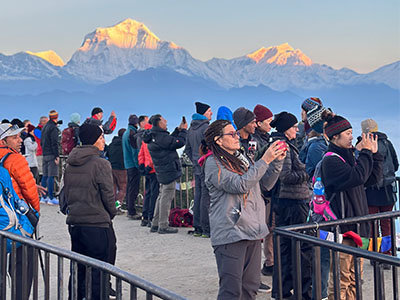
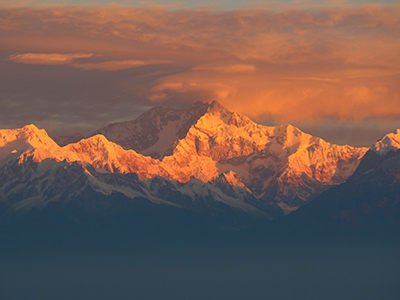
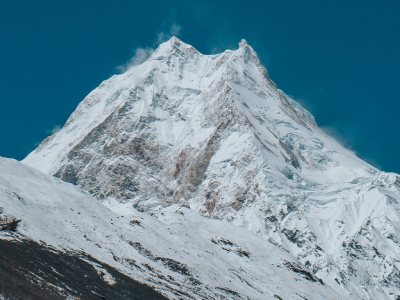
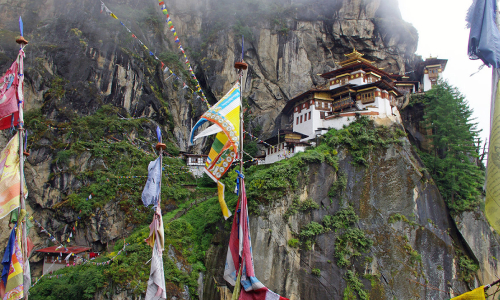
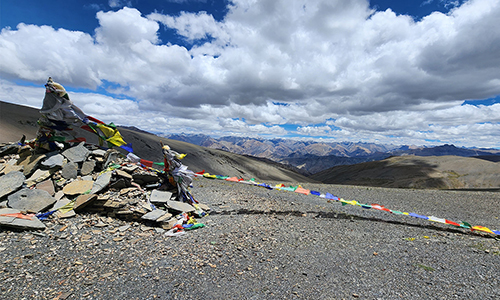
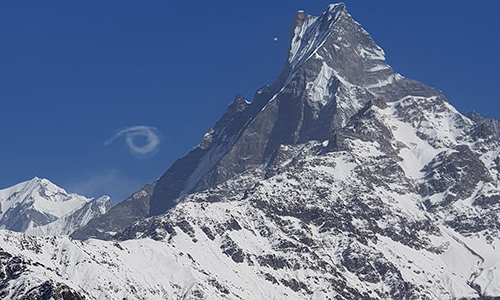
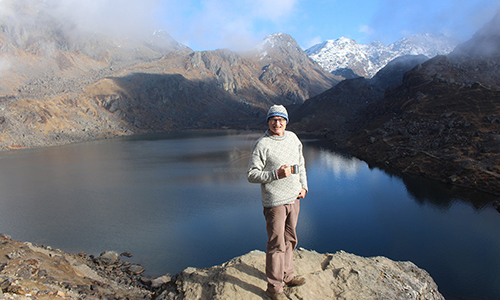
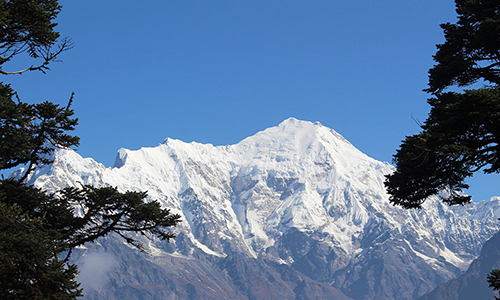


David Miller
2025-06-16 16:46:00
The Mardi Himal Trek was amazing! The views of Annapurna were beautiful and the trail was peaceful. Our guide was very kind and helped us all the way. The places we stayed were comfortable and the food was tasty. I really enjoyed this hidden gem trek.